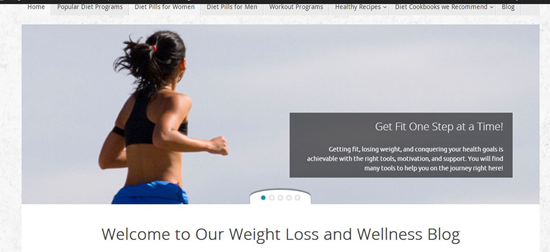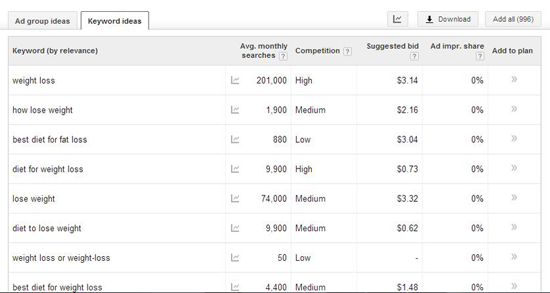How to Make Money Online with SEO-Driven Affiliate Marketing

Everyone loves the thought of building a website and enjoying residual income for years to come without lifting a finger after the initial work is done. Unfortunately, this does not happen for many affiliate marketers for one reason or the other. Below, we are going to look at how to set up an affiliate site that does make you money. Sorry, some work is required to succeed though.
Affiliate marketing is generally viewed as a deceptive and spam-filled sector of Internet marketing, and for many years, this was exactly the case. Today, several legitimate companies have realized that they can drive profits through the roof while limiting their marketing costs by setting up affiliate programs. This has led to a whole new breed of affiliate marketers that stand firmly behind the products they recommend and even stake their reputations on the products they push. Today, I wanted to talk to you about how you can get started in affiliate marketing and how to drive quality traffic to your site using SEO.
Choosing What to Promote
Affiliate marketing from the SEO standpoint is focused on finding products that have great deal of search traffic and have affiliate products that offer a reasonable commission per sale. Personally, I would rarely touch a product that paid less than $30 per sale. The exception would be a product that ties into a website that I already have and is not likely to reduce clicks to a higher paying product.
Personal affiliate marketers choose to promote products that they are passionate about or products that tie into a niche they enjoy. This is a good way to monetize a personal blog or to create additional income from your knowledge in a specific field. For the personal blogger, products may have a low commission but are products they genuinely use, recommend, or believe in.
The third type of affiliate marketer combines personal knowledge with a solid SEO strategy to build a website that is capable of earning substantially over its lifetime. This is what we are going to discuss below. The product you choose will depend upon what you are knowledgeable about but the steps are the same.
To make this easier to understand, I have set up an affiliate site that deals with health and wellness so you can see the following steps in action. You can view the site here: https://shedweightfeelgreat.info/
Finding Keywords to Drive Traffic to Your Affiliate Site
Once you decide the niche you are going to set up an affiliate site in, you need to find keywords that will get visitors to your site. You have two options for getting starting.
1. Select a product to promote within your niche and find keywords related to it
This method requires you to start by researching the top-performing affiliate products in your niche. If you are new to affiliate marketing, this could be as simple as setting up an account with ClickBank and looking for products that tie into what you would write about on your website or blog. ClickBank allows you to sort by categories so finding products in almost any niche is pretty easy. When looking at products to promote, sort by Gravity, the higher the Gravity number, the better a product has proven to convert.
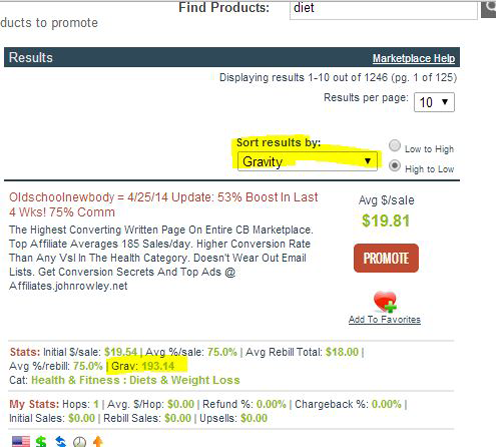
Once you find a few products with a Gravity of 50 or higher, look at the landing pages for the product, read some reviews, and make a list of products you are willing to promote. You will now use this information to find suitable keywords to target.
In the example site I created, I selected Venus Factor and a few other diet pills for women. I then set out to find some keywords that generated enough traffic to target. I found the following keywords to be sufficient.
- diet pills for women -5,400 searches
- diet pills for women that actually work- 100 searches
- best diet pills for women -12,100 -searches
- best diet pill for women -720 searches
- diet pills that work for women -1,300 searches
I found these keywords using the Google Keyword Planner; it is fast, simple, and free. The downside of using the Keyword Planner is that you only get closely related terms and it is likely that competition is targeted the same terms. Below we are going to look some other free ways to find keywords that are less competitive.
I am sticking with the terms above for my site to see what it takes to rank them in 2014 since they are very competitive in nature with sites like WebMD, Redbook, and the MAYO Clinic taking up the top results, this will be a later case study.
2. Find buyer keywords in your niche and find products that are relevant to those terms
The second option for choosing affiliate products is to start with general terms that describe what your blog will be about and then you will find products that fit the bill. If you look at the sample site I created, you will see that the general theme is fitness and weight loss. Using this information, we can begin to find out what people search for in relation to this topic. Here is how you can find some great target keywords.
Google Keyword Planner + Competitor Landing Pages
Since you know you are going to write a fitness and weight loss blog, head over to Google and see what the top performing blogs in the space are. You can simply search for "weight loss blogs", "health and fitness blogs" and variations of your subject, you may then run across a site listing the top blogs in that space or you will see several individual sites in the SERPs. Make a list of the URLS of the top 10-20 sites in your niche and save that list.
Open Google Keyword Planner and enter the URL of the other blogs one at a time.
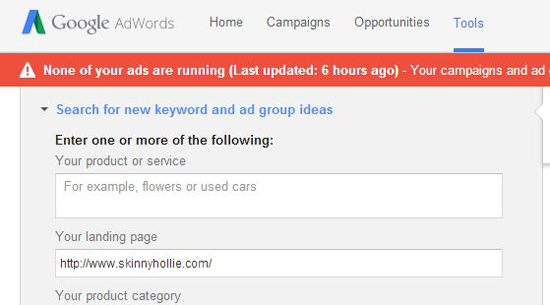
As you will see below, this will give you a list of keywords that Google thinks the page you entered is targeting. If you find top blogs in a competitive space, chances are they will have spent a great deal of time to find good keywords, put this to use for your site. Here are some of the keywords from the site entered above:
Simply export the keywords that have enough traffic to target (usually over 1K/month) and put them in a spreadsheet. Repeat the above steps for the remaining list of URLs of top blogs in your space. Combine all the keywords in excel and use the "remove duplicates" function.
You now have a great seed list of keywords to use for your site and you may have even found a few hidden gems in the list. You can go a step further though to find long tail keywords and further refine your list.
Finding Long Tail Keywords from Your Seed List
Long tail keywords can be ranked more quickly and can make up the bulk of your website traffic when used properly. Finding long tail keywords can be done using a very simple tool, Google related searches. Above we see one of the terms listed is "weight loss", so let's enter that into Google and see what the related searches are.

As you can see there are some long tail keywords that people are actually searching for. Take these keywords and head back over to the Keyword Planner to find out if any of them are worth targeting.
As you can see, the three phrases above get a lot of search traffic so they would be worth going after. The next step is to evaluate the competition for this term. You can do this using tools or simply by looking at the SERPs for the term.
If we Google "weight loss programs" you will see some heavy competition including WebMD, Nutrisystem, and some other reputable sites.
Hidden Gold Mine Alert!!!
In this case, I did notice one site on page one that caught my attention: FreeDieting.com.
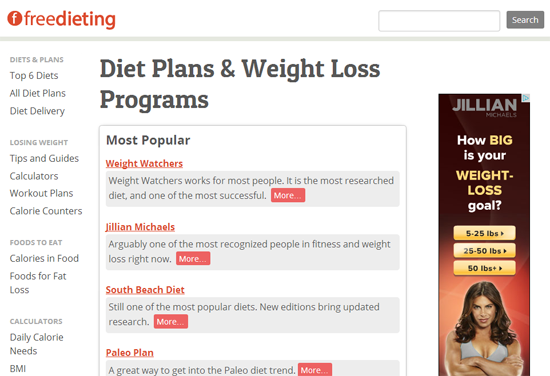
When you visit the site (screenshot above), you can see it was made to be monetized with Adsense and affiliate links. This could save us a lot of time, so we are going to see what keywords they are targeting since they are using a similar business model as our sample affiliate site. Head back over to the Google Keyword Tool and enter the URL of this site into the landing page box and here are just a few of the keywords you will find:
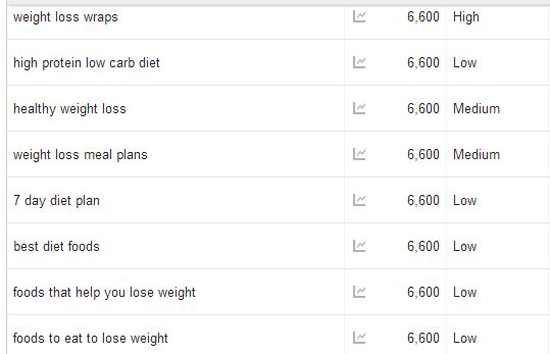
You can go through the entire list and find several long tail keywords that get traffic and target these terms for your own site. Always keeping your eyes open for sites like this on the front page can give you a quick win and some valuable keywords without spending any time finding them.
Assuming that you do not find a gold mine of your own on page one of the SERPs, here is how you can continue your keyword research process. Remember, we were looking for long tail keywords using the Google related searches information. A free and handy tool called ubersuggest and self-proclaimed as "suggest on steroids" will allow you to take this to the next level.
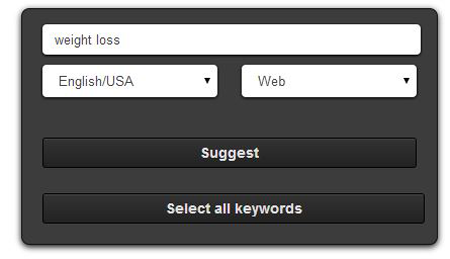
Simply enter your seed keyword and you will receive a ton of related searches. Run the long tail keywords through the Keyword Planner and look for hidden gems. Repeat the process until you have a sufficient list of keywords that you want to target for your website. You can now use your target keywords to look for affiliate products that would be a natural fit for your website. You could use ClickBank (easy and reputable) to find products or you could search "your keyword + affiliate program", "your keyword + affiliate", or several variations of the two.
Setting Up Your Affiliate Site or Page
As I mentioned, on the test site, I chose Venus Factor, a diet pill for women as the main item I intend to promote along with some related products. You can choose to promote one or many products; this choice will impact how you develop your site and where you host it as well.
Using Web 2.0s for Affiliate Marketing
Many people start by setting up sites on free Web 2.0 platforms like Squidoo since it is free and easy to setup. This can work but you must remember you are only borrowing space when you use a free platform and at any time your page could be taken down. If you are going to be experimenting with SEO for the first time, have no money to spend, or are willing to risk losing your page at any time, go ahead and use a Web 2.0 for your site. I suggest hosting your own sites though.
Self-Hosting an Affiliate Site
I prefer to create sites on their own domain. Your can get hosting for a couple dollars per month and a domain for free with many of the hosting packages. WordPress is a super simple and user friendly content management system and it makes setting up a website very simple. You can select from a number of free themes or you can buy a premium theme for around $70-100. For the time and effort involved, using WordPress is one of the best ways to develop an affiliate site in my opinion.
Once you have installed WP and added your theme, you will need to add content to your site. If you are setting up the site to resemble a blog, having an about us page and at least 5-7 posts should be enough to get you started. Remember when writing the blogs what your keywords are and what action you want people to take.
Alternately, you can set up your site like a typical website with a blog. I chose this option for my affiliate site so that I could funnel authority from several blogs into a single page in the future to rank it. Either way, create some unique content for your site and if you are going to use any PLR or filler content, set those pages to no-follow to avoid any duplicate content issues.
Don't Forget to Optimize for Conversions
Regardless of how much traffic you get to a website, if you are not converting, you are not going to make money. Be sure to optimize your pages to the best of your ability and then use cheap tools like Instapage to set up and split test your pages to optimize for conversions.
Using paid ads can be a good way to test your site prior to optimizing for keywords or layouts. Set up ads using the keywords you plan to target on each page and see how well they convert. You can then try variations to the landing page to monitor its' influence on conversion rates. If your pages rarely convert, you either have a poor layout or a bad keyword. Website Magazine and QuickSprout both have a lot of good information about conversion optimization so read up if you are lost in the sauce.
Optimizing Your Posts and Pages
Yoast SEO for WordPress is a very handy plugin and it will allow you to optimize your pages for a single keyword simply by following suggestions from the tool. It is not the end all, be all of on page, but for the price of free; it gives you a good start. Remember to set up Google Webmaster tools and Google analytics for your site as well so you have access to the useful and free data they provide. While in webmaster tools, don't forget to set your preferred domain.
In addition to the suggestions Yoast will provide you, you should aim to have 700+ words of unique content for any page you want to rank. You do not have to have this much content, but it will make your task easier. You should also mention terms related to the pages main keyword throughout the content as this will help to establish the overall theme of your site. Use keywords in your internal links and remember, Google only counts the first link on a page for the purpose of anchor text so make the highest link to any page contain the most important term. For a detailed look at on page SEO, check out the anatomy of a perfectly optimized page and once you have your on page dialed in, get ready to build some links and generate social signals.
3 Simple Link Building Techniques for Affiliates
We all know that link building is still very important to ranking a website. Although many people recite Google by saying "write great content" you are not going to get very far with great content alone. There are about five websites for every person on earth, you need to make yours stand out and get noticed and links are one way to do it. Here are some link building methods that work and are pretty safe when done correctly.
Guest Posting
I know that Google said guest posting is dead and you should not do it, they may not like guest posting but it still works very well. The type of guest posts that get you in trouble are the ones made only for SEO. If you find websites that are reputable in your niche and write a guest post that is likely to send traffic to your site, you are building a good link. If you are finding low quality sites that are kind of similar to your site and are not likely to get you any referral traffic, you are wasting your time and guest posting the way Google hates. Only post on sites that you would post to if SEO did not matter and you will have nothing to worry about.
Outreach Link Building
Editorial links from relevant and authority websites are the cream of the crop in outreach link building. In order to get these links, you need to have linkable assets and a good method for outreach. I detailed this method in "Link building without mass content production" but put briefly, you should look for content in your niche that people generally link to and then create a similar but superior piece of content.
Relationship-Based Link Building
Personal and professional relationships will allow you to get links that others cannot get. If you are an affiliate in the health industry and have made money for several companies, ask them for a link to your new site to get it rolling. If you have a friend or several friends that have closely related sites, ask them what content their site needs and give it to them for a link. In order to rank, you need to build your competitors best links and links they can't get, leveraging a relationship can get you there faster.
If you master those three methods, you can dominate the competition in many niches and you are adhering as closely to white hat SEO as possible without avoiding link building altogether.
Bonus: Generating Social Signals for Your Site
The rumors about social signals influencing rankings are far and wide. Google has said that they do not have any impact or rankings. A study by Quicksprout showed a correlation between social shares and improved rankings and another study by Stone Temple Consulting looks specifically at how +1s impact rankings.
At the moment, the general consensus is that social shares can at least provide a temporary spike in how your site ranks. Even a temporary spike in the rankings of your site could give you the exposure you need to gain some natural back links and secure a permanent rankings increase, so a focus of being social is important.
Even if you are not super active on social media, you should at minimum create a Google Plus, Twitter, and Facebook page. You can use a tool like Buffer App or Klout to schedule posts for the entire week in just a few minutes. Add a mixture of curated content and your content to engage users.
You should also make sure that your website makes it easy for people to share your content across their networks. Adding share buttons after posts, in a pop over form, or even using a plugin that requires a share to unlock content can boost your signals and rankings, which I feel will become even more important in the near future.
As you can see, setting up an affiliate site takes a good deal of time and research. You must be willing to put in the work if you plan to make money online through affiliate marketing. Following the steps above will get you off on the right foot but be sure to test, study, and review what works for you.
If you are an experienced affiliate marketer or would like to share your mishaps or affiliate successes, I would love to hear about them below.



